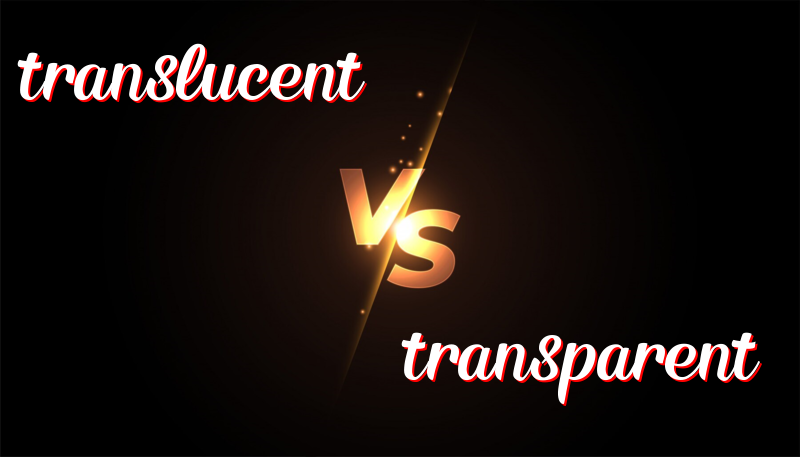Translucent vs. Transparent: Understanding the Difference
Translucent versus Transparent
History:
The words ‘translucent’ and ‘transparent’ both have Latin origins. The word ‘translucent’ comes from the Latin words “trans” and “lucere,” meaning “to shine through.” While ‘transparent’ also has Latin roots, coming from “trans” and “parent,” meaning “to see through.”
How to Use:
– Translucent: It refers to something that allows light to pass through but scatters it, making objects on the other side blurry.
– Transparent: It describes something that allows light to pass through without scattering, creating a clear view of objects on the other side.
Trick to Remember the Difference:
Think of the word “translucent” having the word “lucent” in it, which sounds like “look.” This will remind you that translucent objects let light through but obscure the view, while transparent objects allow a clear view.
Examples of Usage:
– The frosted glass window is translucent; you can make out shapes on the other side but not details.
– The clear glass window is transparent; you see everything clearly on the other side.
– The lampshade made of stained glass is translucent, casting colorful shadows.
– The plastic wrap is transparent, showing the sandwich inside perfectly.
– The bathroom door’s glass panel is translucent, ensuring privacy while allowing light in.
Summary:
In summary, ‘translucent’ is used when light passes through but scatters, creating a blurry view, while ‘transparent’ indicates that light passes through without scattering, giving a clear view on the other side. Remember the trick with “look” in “translucent” to distinguish between the two words easily.

Leave a Reply
You must be logged in to post a comment.